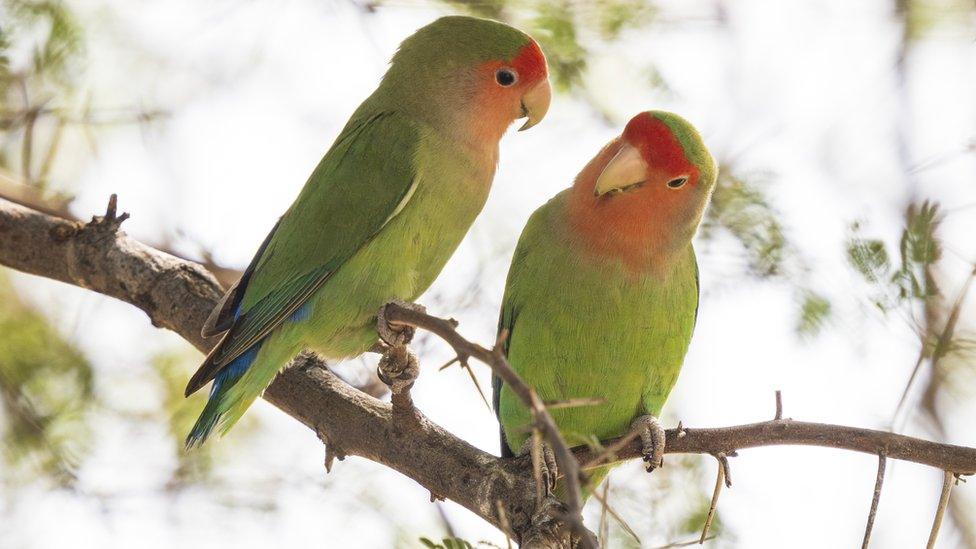Parrots can swing from branches like monkeys - but using their beaks
- Published
- comments

You've probably seen monkeys swinging from branch to branch, but what about parrots?
Scientists have learned that some parrots can swing through the trees with great ease - not just using their legs, but also their beaks!
Researchers have described seeing the parrots hanging underneath a 3D-printed "branch".
The birds then moved along using their beaks and hind legs to grasp and swing themselves along like a pendulum, before letting go and reattaching themselves a few inches farther along.
This method of movement is similar to the arm-swinging style that tree-loving primates use to move around the forests, which is known as brachiation, so the scientists have called this movement "beakiation".
How did the scientists make this discovery?
The experiment was carried out by a team from the New York Institute of Technology who designed an experiment for four parrots from a species called rosy-faced lovebirds.
Previous research has shown that parrots tend to perch on larger branches, but they wanted to see how the birds would move along thin branches in trees.
They designed and 3D-printed a tiny plate to replicate a very thin branch, which was then suspended from a plate that could measure how much weight the parrots put on it with their feet or mouth.
Because the branch was too thin to walk on, the birds had to grasp it with their feet and beak, leaving their body hanging below.
They live in the woodlands of southwestern Africa.
The birds grasped the simulated branch with their beak, then released the grasp of both hind legs simultaneously.
Melody Young, from the New York Institute of Technology said that the birds hadn't been trained to move in this way, adding "we just put them up there, and all four birds chose to adopt this same behaviour".
However as the birds used in the experiment all live together it's not known if those in the wild show the same kind of behaviour.
The research - published in the journal Royal Society Open Science - also showed that the swinging birds weren't that good at it and were left puffed out afterwards.
- Published24 January
- Published25 April 2023
- Published14 June 2022
